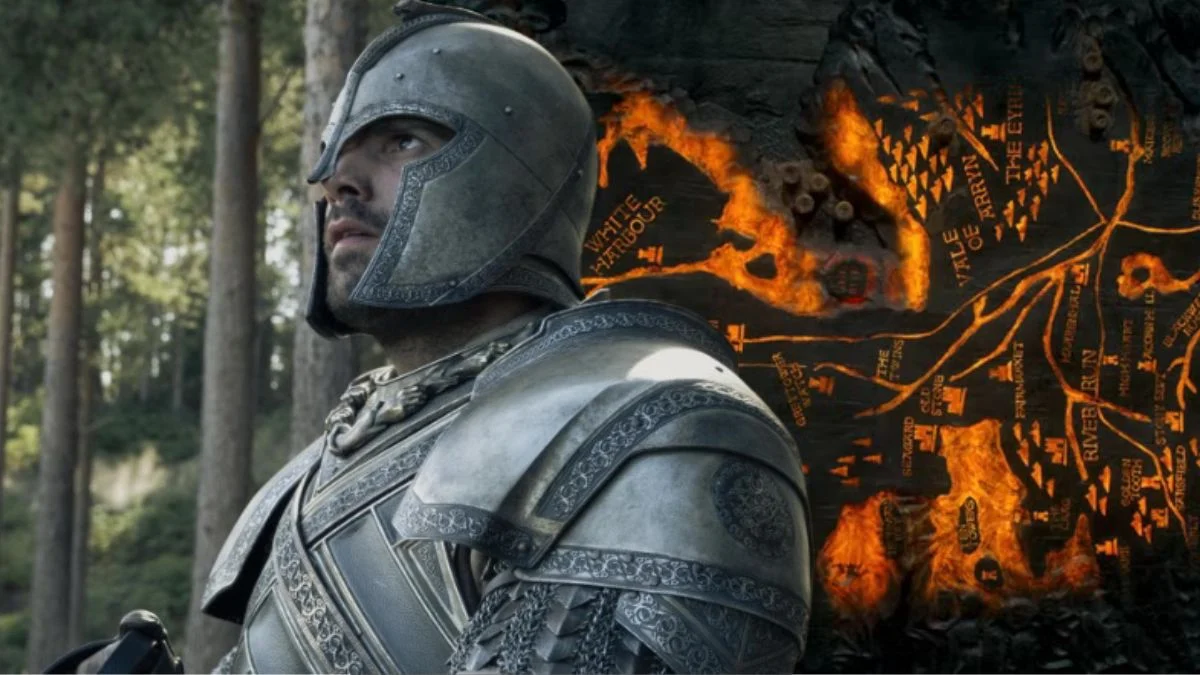
‘House of the Dragon’ takes place in the complex world of Westeros, filled with political schemes, dragons, and a rapidly unfolding story. Despite the show’s careful production and large budget, a few minor mistakes inevitably make their way into such a detailed series. These little errors – like inconsistencies between shots or hidden objects – can be spotted on a second viewing and briefly distract you from the story.
Below is a list of noticeable errors from different episodes, including inconsistencies, prop issues, and odd staging choices. Each entry explains the mistake and what you’ll see if you watch the scene closely or replay it. Once you spot these small details, they’re hard to unsee, making them memorable flaws in an otherwise large-scale production.
Vanishing Goblets at the Small Council
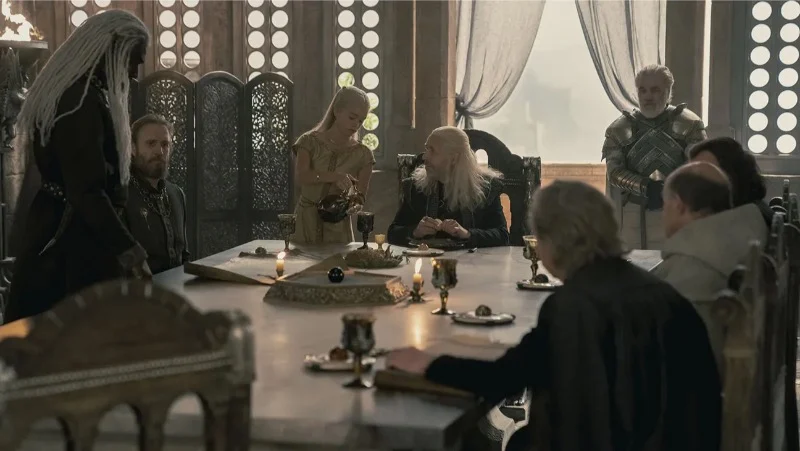
Throughout multiple Small Council scenes, objects like cups and pitchers seem to move on their own. A cup might be near the Hand of the King in one shot, then closer to the center in the next, and even disappear completely in a following shot. This also happens with items like quills and inkwells – a quill resting on a ledger can suddenly appear next to a different inkwell.
As a fan, I’ve always noticed something a little off in those council scenes. It seems like between shots, things would get subtly moved around on the table. Because they filmed from different angles, when the scene cuts back and forth, you can actually *see* things like goblets shifting positions if you pause the frame – it’s a classic filmmaking issue when they have to reset everything between takes.
Candle Heights That Change Mid Scene
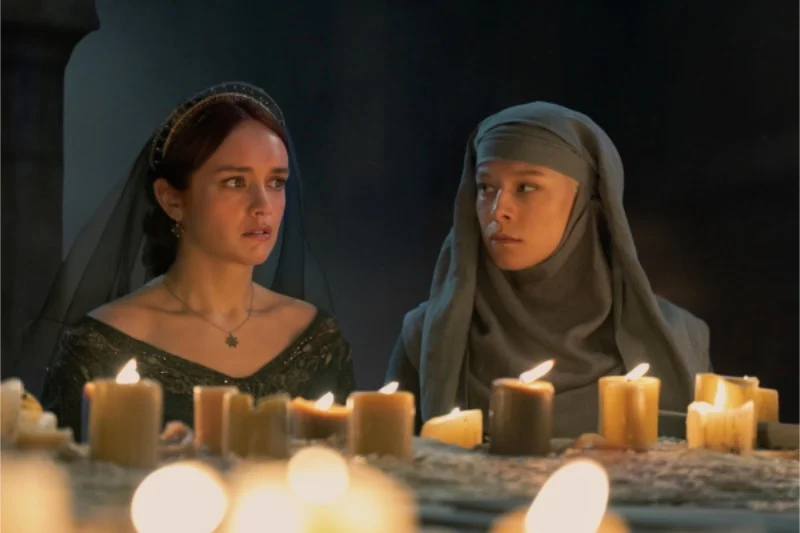
The movie relies a lot on candlelight for indoor scenes, but the candles don’t always seem to stay the same size. During a single conversation, you might see tall candles quickly become short, and then magically grow back when the camera angle changes. Wax drips also appear and disappear unexpectedly between shots.
This issue occurs because different shots are often filmed at different times, sometimes with new candles. Close-up shots are usually filmed later, using a different candle setup. When these shots are combined in editing, the candle burn levels can appear to jump inconsistently. You can easily notice this in the throne room and study scenes – look at the candles in the background for the most obvious examples.
Armor Damage That Resets Between Cuts
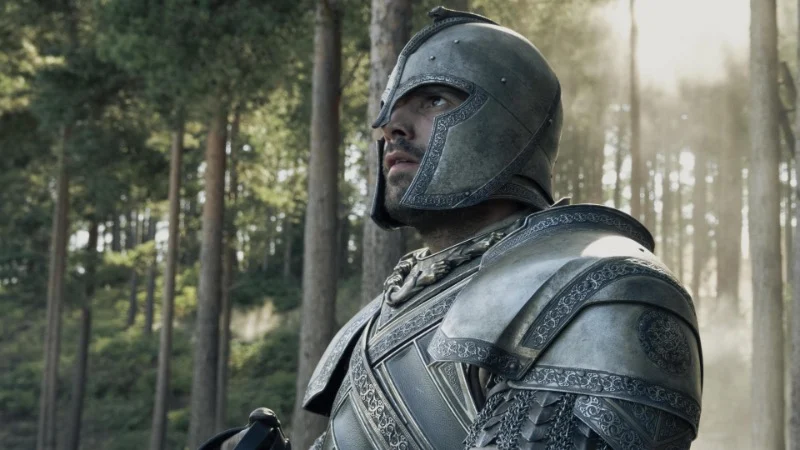
During battles and tournaments, armor often appears damaged – showing dents or blood – but these marks mysteriously disappear in subsequent shots. For example, a breastplate might look scratched up in a close-up, then appear perfectly clean when the camera pulls back. This inconsistency extends to other pieces of armor, like shoulder plates, which display damage that isn’t visible from different camera angles.
As a film buff, I always notice those little continuity quirks. It’s a funny thing – sometimes they have to quickly reset costumes and props between takes for the actors’ safety or comfort. But then, if a shot with slightly damaged armor actually *works* better for the performance, and they need to use a camera angle from when everything was pristine, it creates a noticeable jump. It’s especially clear when you see the scene from multiple camera angles – those quick fixes become really obvious! It’s a testament to how much work goes into making a film seem seamless, even when things don’t quite align.
A Hand That Switches Items Mid Conversation

During feast scenes, you sometimes see a character holding something like a cup or knife in their right hand in one close-up, then suddenly it appears in their left hand in the next shot. Dialogue flows smoothly, but these objects seem to jump between hands without anyone actually passing them. This also happens with things like bread and napkins, appearing to move across cuts in the editing.
As a movie fan, I’ve noticed something interesting about editing. Sometimes, actors will slightly change their position between takes – it’s just part of the process. Editors will then choose the best performance from each camera angle, and that can mean combining shots where the actor’s hands are in different positions. If you pay attention to details like rings or sleeves while someone’s talking, you can sometimes spot these little jumps between takes.
Background Extras Reappearing in New Spots
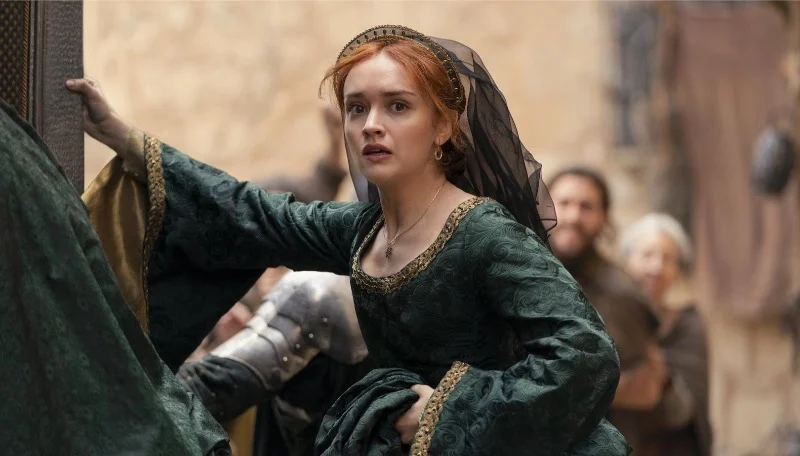
In scenes with large groups, like royal gatherings or markets, the same background actors often appear multiple times, even in impossible locations. For example, someone wearing a hood might walk across the screen in one direction, then quickly reappear on the opposite side moving the other way. You might even see the same person carrying a basket walk past, only to reappear further away in the same scene.
To create the look of crowded scenes, filmmakers often film multiple takes. When these takes are combined, the same actors can seem to appear in several places at once, almost like they’re teleporting. You can often spot this effect by watching for a specific piece of clothing, like a uniquely colored coat or hat, as the camera switches between different shots.
Dragon Saddle Straps That Rearrange Themselves
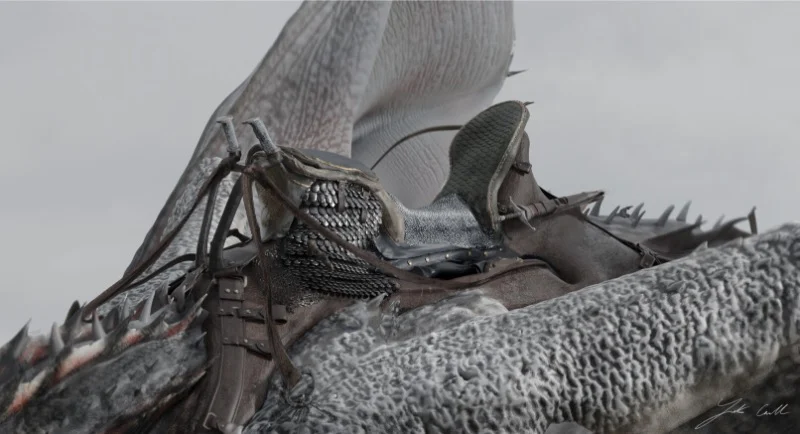
Stunt work involving flying and horse riding requires complex safety rigging. These straps often appear different from one camera angle to the next. For example, a chest strap might seem to be positioned above a rider’s belt in one shot, but below it in another. Similarly, a strap that’s dangling loose can suddenly appear neatly fastened when the camera view changes.
These inconsistencies happen because shots taken from different angles – like those from above, on a studio rig, and close-ups – are combined. Each time the setup is adjusted, the supporting harness shifts slightly, and this becomes noticeable when editing the footage. If you carefully watch the takeoff and landing sequences, you can easily see these small changes in the harness straps.
Map Table Markers That Multiply or Move
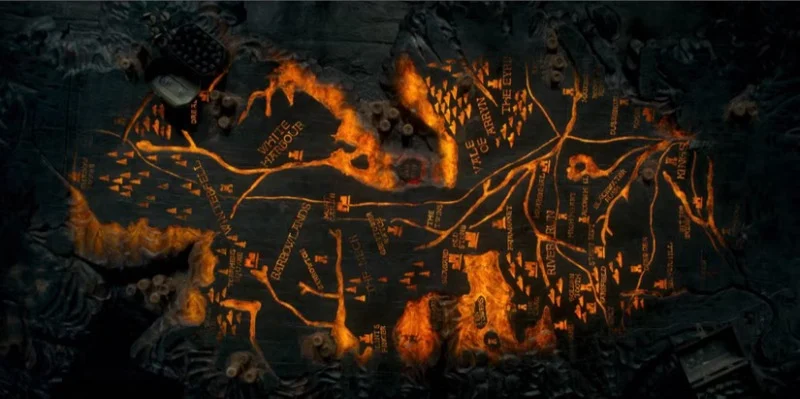
The detailed war table displays markers representing armies and fleets, but their positions aren’t fixed – they shift as the scene unfolds. For example, a group of markers seen spread out near the Narrow Sea in a wide shot appears closer together in a subsequent close-up. Later, one of the carved symbols mysteriously moves back to where it started, even though no one physically touched it.
Maintaining consistency is tricky when filming scenes from different angles. While the props team generally resets everything between takes, even small changes in object placement can be noticeable when the shots are cut together. A common issue is when a character gestures towards something, and then the camera cuts to a different angle – any movement of that object will immediately stand out.
Hair Partings That Flip After Cuts
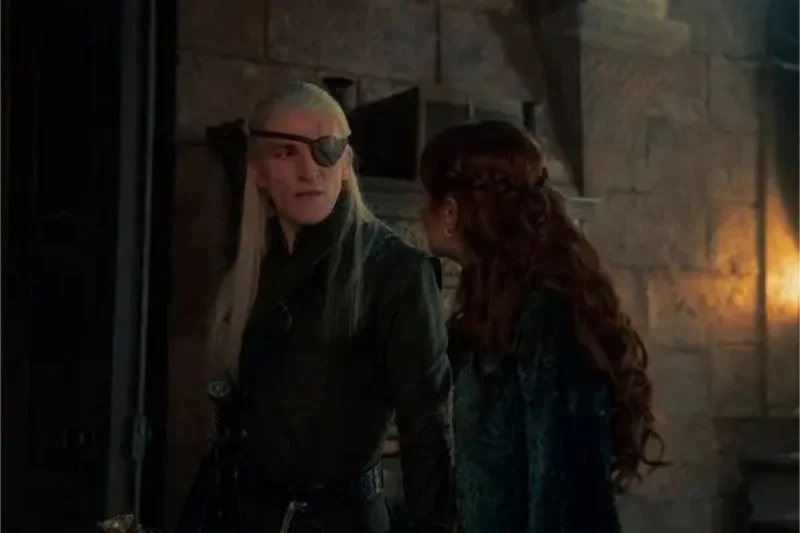
People with long hair or those wearing wigs often show inconsistencies in how their hair appears on camera. A strand falling over one shoulder in a close-up might seem to switch to the other shoulder in a wider shot. Similarly, braids can appear tighter or looser depending on the camera angle, and then return to their original look when the view changes.
Wigs and hair extensions can shift during filming, and it’s impossible to document every detail with photos. This can cause noticeable jumps in the footage when scenes don’t quite line up. Pay close attention to the hair framing the face during close-up conversations, as that’s where these changes are most visible.
Swords That Sheath Themselves And Reappear
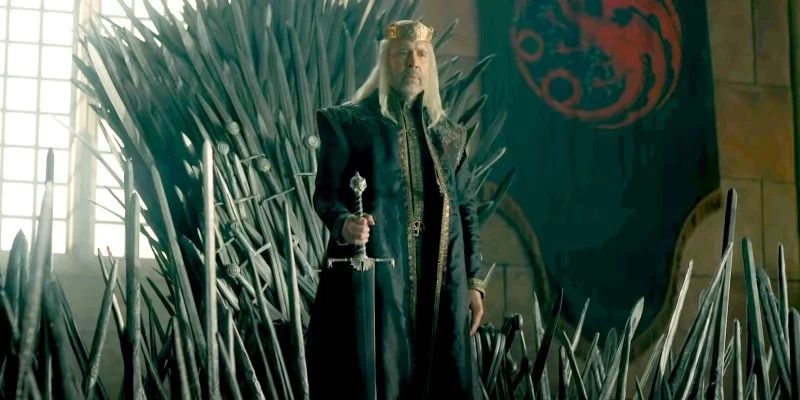
During dramatic scenes, like those in hallways or courtrooms, you sometimes see a character put away their sword, only to see them still holding it a moment later. A quick camera switch might even show the sword handle on their belt while their hand appears empty, before they draw the sword again almost immediately.
This effect happens because directors film scenes both with the weapon drawn and put away. By carefully selecting the best reactions from each take, editors can create the illusion of doubled action. When played back, it looks like the blade instantly appears and disappears, almost teleporting between the character’s hand and its sheath.
Reaction Shots That Do Not Match The Sound
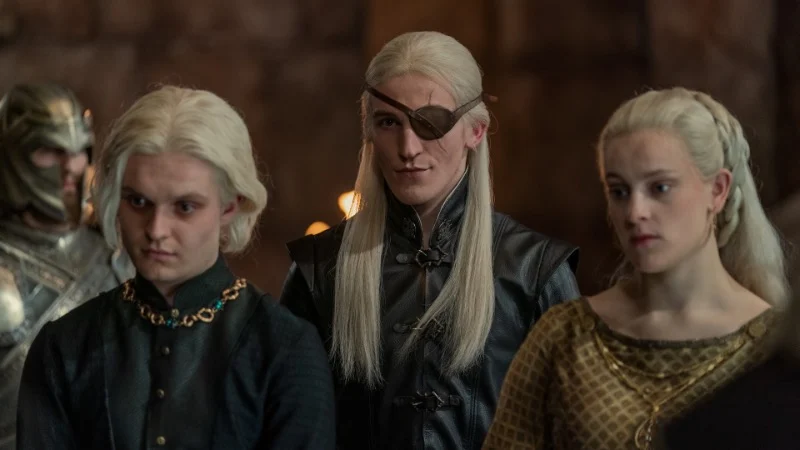
As a big movie fan, I’ve definitely noticed little things that throw me off sometimes. Like, you’ll see someone react to something *before* you actually hear it, or a split second late. It’s usually a quick thing – maybe a character jumps before a dragon roars, or their face registers the sound just a beat too late. It doesn’t ruin the scene, but if you pay close attention and rewind, you can tell the timing is just a little bit off.
Sound effects and complicated editing, particularly when switching between different camera angles, can cause slight timing issues. Even small adjustments made during final audio mixing can throw off the rhythm of the cuts. These subtle synchronization problems are often more noticeable when listening with headphones, especially during fast-paced scenes.
Let us know about any funny mistakes or small errors you’ve noticed in ‘House of the Dragon’ in the comments below! That way, everyone can keep an eye out for them when they watch the show again.
Read More
- Fed’s Rate Stasis and Crypto’s Unseen Dance
- Silver Rate Forecast
- Красный Октябрь акции прогноз. Цена KROT
- Ridley Scott Reveals He Turned Down $20 Million to Direct TERMINATOR 3
- Blake Lively-Justin Baldoni’s Deposition Postponed to THIS Date Amid Ongoing Legal Battle, Here’s Why
- The VIX Drop: A Contrarian’s Guide to Market Myths
- MSCI’s Digital Asset Dilemma: A Tech Wrench in the Works!
- Bitcoin’s Ballet: Will the Bull Pirouette or Stumble? 💃🐂
- ETH to the Moon? 🚀 Or Just a Bubble?
- Northside Capital’s Great EOG Fire Sale: $6.1M Goes Poof!
2025-10-06 18:46